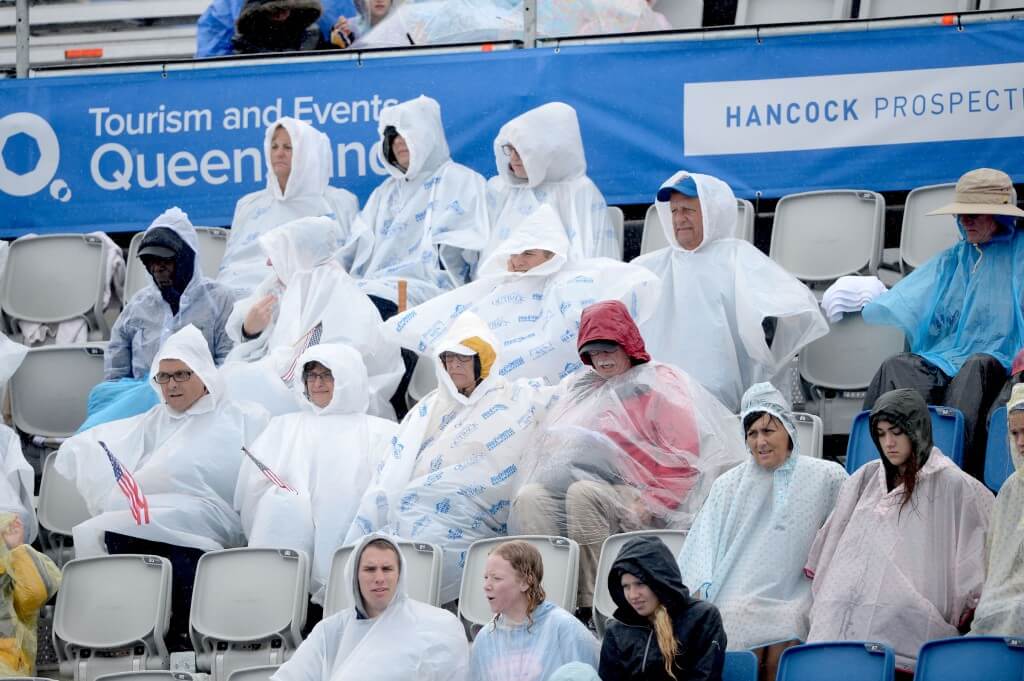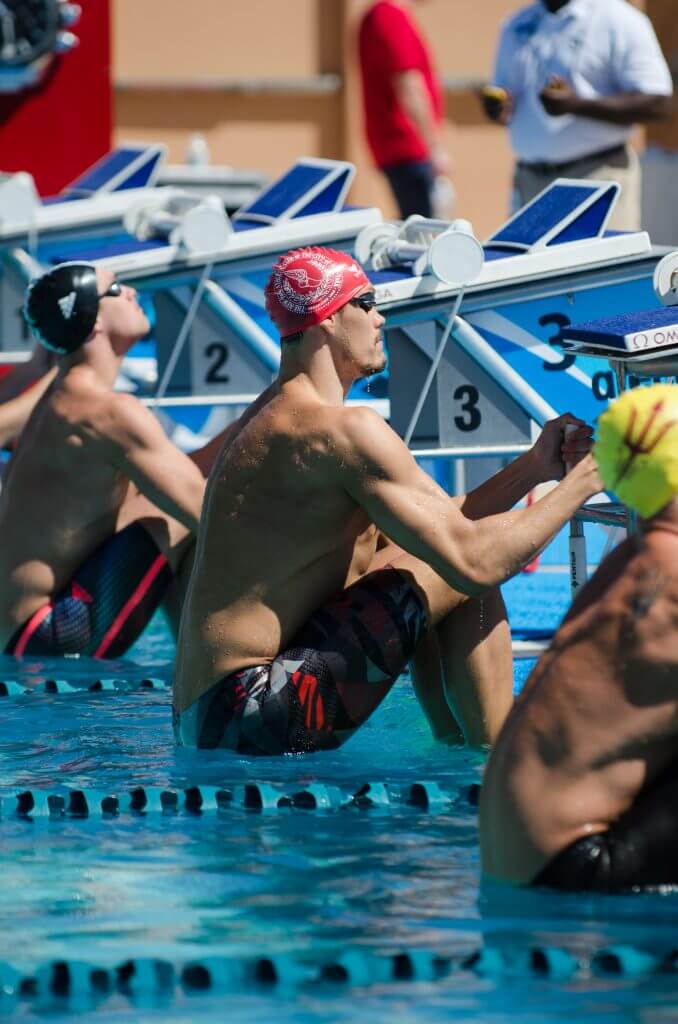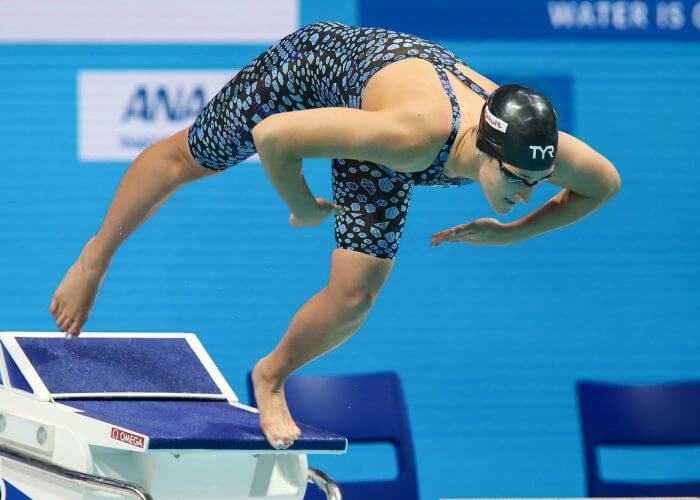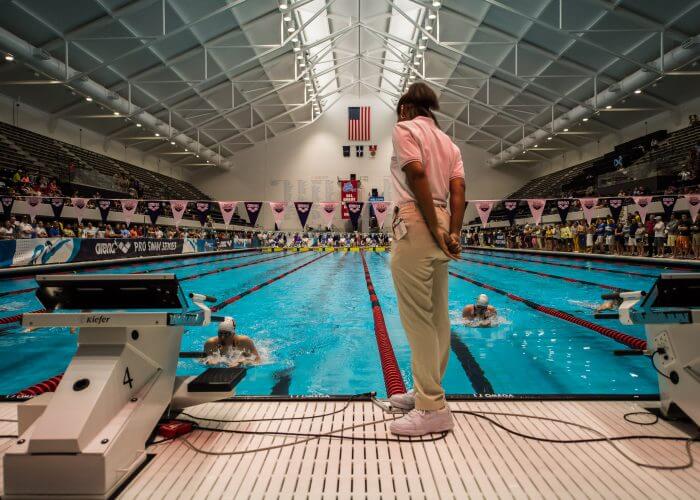Swimming 101: Covering the Basics We Take For Granted

Swimming 101: Covering the Basics We Take For Granted
By Meaghan Raab
As an avid sports fan at the University of Georgia, I had countless conversations with other fans at the games that I attended. One in particular sticks out in my mind. I was at a volleyball match when an older couple that I knew sat next to me and began to ask me questions about swimming. They had attended our swim meet a few days earlier and quickly realized they knew hardly anything about my sport.
The questions they asked were so simple, and yet the answers involved basic information which I have taken for granted as a swimmer. If you have non-swimming friends who want to learn more about our sport, here are some answers for some of the most commonly asked questions by non-swimmers.
Why do swimmers have huge shoulders?

Photo Courtesy: Brooke Wright
Swimmers have large shoulders because their muscles are so developed from the use of the arms during swim practices. Shoulders are one of the most vital parts of the body when it comes to swimming. They are used in every stroke therefore resulting in the larger muscles seen on swimmers. One swim practice may require 4,000 to 5,000 freestyle strokes! That’s a lot of shoulder work!
Does shaving really help?
There is little scientific proof that shaving enhances performance, because it is more of a mental benefit than a physical benefit. Swimmers often feel faster with freshly-shaved legs. This is why the guys shave their legs for the biggest meets of the year, and why girls don’t shave theirs for a while before the big meet in order to feel the most dramatic difference from shaving. Shaving also helps to remove a layer of dead skin from the swimmer’s arms and legs, making their skin more sensitive to the feel of the water and more slick, allowing them to glide through the water smoother.
Yards vs. meters: what’s the difference?
When the pool is measured in yards it is 25 yards long, known as “short course”. This distance is raced in most high school and collegiate meets. When the pool is measured in meters it is 50 meters long, and is known as “long course”. This is the distance that is raced in the Olympics and international meets.
What is IM?
The individual medley events – also known as IM – consist of all four strokes swum in a specified order: butterfly, backstroke, breaststroke and freestyle. There are two distances of IM: a 200, where in short course a swimmer swims two laps of each stroke, and in long course they swim one lap of each stroke. A 400 is twice as long, therefore in short course, four laps of each stroke and in long course, two laps of each stroke. A swimmer who excels in IM is called an “IMer”.
Why do you practice twice a day?
Practicing twice a day simulates race day at the meets where there are prelims (morning) and finals (evening) sessions. It’s similar to any other sport where the athletes simulate game day to help the preparation beforehand. Having a practice in the morning gets swimmers accustomed to waking up early and getting ready to swim. The afternoon practices are needed to train the athletes to race again that same day. Swimmers don’t swim twice a day every day, but these double practice days are important for optimal performance at meets where racing in the morning and afternoon are necessary.
Why do you practice in a regular suit but race in that weird knee-length suit?

Photo Courtesy: SIPA USA
Practicing in a regular suit is common. This type of suit is more comfortable for the duration of a vigorous workout. The knee skin suits are very tight, made of a high-tech fabric with little stretch, and often take at least 10 minutes to put on. They are worn in championship meets where the swimmers have tapered and shaved. Putting on a tech suit can give the swimmer a sense of confidence they didn’t have before donning the tight piece of engineered material. The main purpose of these suits is to reduce drag, making swimmers more hydrodynamic. Swimmers will tell you that they swim faster wearing these suits than wearing their practice suits. The compression of these suits makes the swimmer smaller in the water, reduces muscle vibration, and helps flush lactic acid through the body a little faster than normal.
Wait, what in the world is taper?
Taper is a swimmer’s favorite time of year. Practices get shorter and easier leading up to a big meet. This may seem backwards, but with the high volume of training swimmers go through all year, the body needs a chance to recover and feel energized while still training. Taper allows the swimmers to fine tune the details of their strokes for their races, and the change in pace allows for the psychological stresses of the sport to resolve as the physical demands decrease. Swimming is just as much a mental sport as it is a physical one.
Why do swimmers eat and sleep so much?
Swimmers need to fuel their bodies in order for them to train for so long. It is not uncommon for swimmers to eat two dinners after practice during the time of year where their training is the highest. Pasta is a common meal for swimmers, particularly during swim meets. Eating a lot of pasta at swim meets is known by swimmers as “carbo-loading” because the carbohydrates are important fuel for the body as they get ready to compete.
Like other athletes, swimmers experience exhaustion and fatigue, so sleep is a natural part of the recovery process. With practices in the wee hours of the morning, swimmers are likely to squeeze in a nap between class and swim workout number two. College swimmers often plan out their class schedule to provide as much time for napping as possible.
What gets you disqualified?

Photo Courtesy: Peter H. Bick
There is a set of rules laid out for swimming by USA Swimming. The rules are different for each stroke, with additional rules for the IM events. Violating one of the rules can get you disqualified by a stroke and turn official. If you are disqualified the time you swam in the race does not count.
One common disqualification is a swimmer not touching the wall with both hands during butterfly or breaststroke, which is a rule. These strokes also require simultaneous arms and legs, so if the arms are out of sync, the swimmer can be DQd for non-simultaneous arms. Another possible disqualification is a swimmer remaining underwater past 15 meters. Kicking underwater can be the fastest way across the pool, which is why the rule exists. It forces the swimmer to surface and actually swim the stroke.
Are you going to the Olympics?
The easiest answer is “no”. Making the Olympics is a challenge in any sport, but particularly in swimming where only two athletes in each event make the team. The United States is so dominant in swimming that the third and in some cases fourth-place finishers at the US Olympic Trials would be fast enough to make the top 8 at the Olympics, but they don’t get the chance because the US can only take the top 2. In the United States, the depth chart is overflowing with talent and speed. Almost every young swimmer has dreamed about making the Olympic team and representing the US by wearing the stars and stripes.
All commentaries are the opinion of the author and do not necessarily reflect the views of Swimming World Magazine nor its staff.



